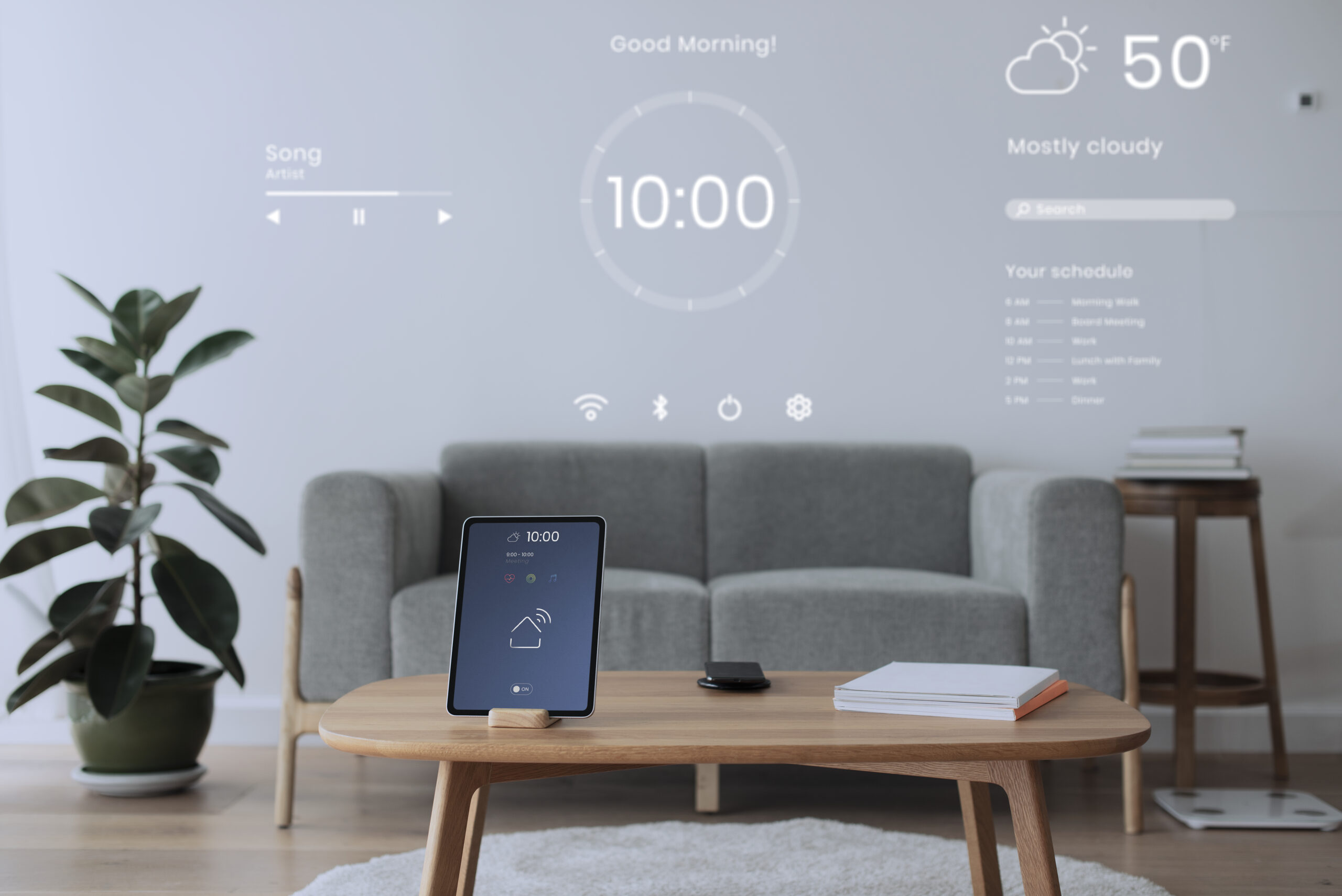In the age of advanced technology, integrating smart home systems into your living space has become more accessible and practical than ever before. Smart home design goes beyond just having the latest gadgets; it’s about creating a cohesive, functional, and aesthetically pleasing environment that enhances your daily life. Here’s how to seamlessly incorporate technology into your home design.
1. Plan Your Smart Home Ecosystem
Start with a Comprehensive Plan:
- In: Before purchasing devices, outline your smart home goals. Consider what aspects of your home you want to automate, such as lighting, security, climate control, entertainment, and kitchen appliances.
- Tip: Create a list of compatible devices that work well together. Systems like Google Home, Amazon Alexa, and Apple HomeKit offer centralized control for various smart devices.
2. Smart Lighting Solutions
Enhance Ambiance and Efficiency:
- In: Smart lighting allows you to control the brightness, color, and scheduling of your lights through your smartphone or voice commands. Options include smart bulbs, switches, and plugs.
- Tip: Use smart lighting to create different moods for various times of the day or activities. For example, brighter lights for morning routines and softer, warmer tones for evenings.
3. Intelligent Climate Control
Optimize Comfort and Energy Savings:
- In: Smart thermostats learn your preferences and adjust heating and cooling automatically, ensuring optimal comfort while saving energy. Popular models include the Nest Learning Thermostat and the Ecobee SmartThermostat.
- Tip: Program your thermostat to lower the temperature when you’re not home and to warm up just before you return. This reduces energy consumption and costs.
4. Integrated Security Systems
Ensure Safety with Smart Technology:
- In: Modern smart security systems offer features like remote monitoring, motion detection, and real-time alerts. Components include smart locks, cameras, doorbells, and alarms.
- Tip: Use video doorbells and smart cameras to monitor your home from anywhere. Integrate smart locks for keyless entry and enhanced security.
5. Seamless Entertainment Systems
Upgrade Your Home Entertainment:
- In: Smart TVs and sound systems offer voice control and integration with streaming services. Devices like Amazon Fire Stick, Google Chromecast, and Apple TV can centralize your media experience.
- Tip: Set up multi-room audio systems with smart speakers to enjoy music throughout your home. Use a universal remote or your smartphone to control all your entertainment devices seamlessly.
6. Smart Kitchens
Enhance Cooking and Convenience:
- In: Smart kitchen appliances, like refrigerators, ovens, and coffee makers, offer features such as remote control, recipe suggestions, and inventory management.
- Tip: Invest in a smart refrigerator that can help you keep track of groceries and suggest recipes based on available ingredients. Use smart plugs to control small kitchen appliances remotely.
7. Voice Assistants and Hubs
Centralize Control with Voice Commands:
- In: Voice assistants like Amazon Alexa, Google Assistant, and Apple Siri can control multiple smart devices through voice commands. Smart hubs provide a central point for managing your smart home.
- Tip: Place voice assistants in commonly used areas like the kitchen or living room for easy access. Use hubs to connect and control all your devices from a single app.
8. Hidden Technology
Maintain Aesthetic Appeal:
- In: Integrate technology in ways that don’t disrupt your home’s aesthetics. Use built-in devices, concealed wiring, and stylish covers to keep the look clean and uncluttered.
- Tip: Opt for smart devices that blend with your home decor. Wall-mounted tablets can serve as central control panels, while built-in speakers and hidden charging stations keep technology discreet.
9. Automation and Scheduling
Simplify Daily Routines:
- In: Use automation features to schedule tasks like turning lights on and off, adjusting the thermostat, and watering the garden. Smart home systems can handle repetitive tasks, making your life easier.
- Tip: Set routines that align with your daily schedule, such as dimming lights in the evening or starting the coffee maker in the morning. Use sensors to trigger actions based on movement or environmental changes.
10. Future-Proof Your Home
Plan for Technology Advancements:
- In: Choose devices and systems that are compatible with future upgrades. Look for technologies that offer firmware updates and can integrate with new smart home products.
- Tip: Opt for modular systems that allow you to add or replace components as technology evolves. Stay informed about the latest trends and advancements in smart home technology.
Final Thoughts
Integrating smart home technology seamlessly into your living space enhances comfort, convenience, and efficiency. By carefully planning your smart home ecosystem, choosing compatible devices, and maintaining aesthetic appeal, you can create a home that is both technologically advanced and beautifully designed. Embrace the future of living with smart home design, and enjoy the myriad benefits it brings to your everyday life. Happy designing!
